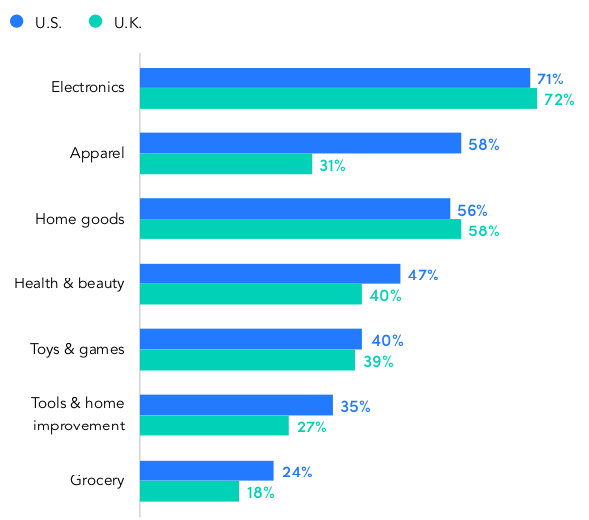Amazon Prime Day, summer’s ‘Black Friday’, becomes 2-day sale
Prime Day 2019 will easily cross $5 billion in sales this year and could inch closer to $6 billion.

Amazon Prime Day, which began four years ago as a tool to drive Prime memberships, has become as hotly anticipated as “Black Friday.” For 2019, it’s expanding from one day to two and will begin at midnight U.S. Pacific Time on July 15.
Since Prime Day’s inception, there has been 20.5% growth in the number of U.S. Prime Day shoppers, according to Adlucent. The company expects this to continue and for this year to be the largest Prime Day to date.
Majority will shop Amazon — and other retail sites. A survey of 1,000 U.S. consumers by Adlucent also found that 75% intend to shop on Prime Day. However, a majority of that group (68%) intend to visit other retail sites. The top non-Amazon retailers that will benefit from Prime Day are Walmart, Target and Best Buy in that order, while 31% will go beyond these big boxes to other online and traditional retailers such as Macys.
Also, more people will be shopping this year and they’ll be spending more, according to a survey of 2,000 U.S. and U.K. consumers by Profitero. Meanwhile, a 2018 pre-Prime Day U.S. consumer survey found 53% of respondents said they were going to spend more than $100 and 34% (of that group) intended to spend more than $200.
Products Prime members most likely to shop for on Prime Day

Prime Day will exceed $5 billion. Prime Day sales in 2018 were roughly $4.19 billion, which was almost double the $2.41 billion the year before. Prime Day 2019 will easily cross $5 billion in sales this year and could inch closer to $6 billion. More than 50% of that will come from outside the U.S. For comparison, Black Friday 2018 brought in roughly $6.2 billion in 2018 according to Adobe.
Fake reviews take a toll. However all is not “up and to the right.” According to a recent survey from Bazaarvoice, “Almost half (44%) of shoppers indicate that Amazon’s recent issues with fake product reviews will impact their participation in Prime Day shopping; 37% will be more cautious when they shop at Amazon, and 7% won’t participate in Prime Day at all.”
Fraudulent reviews have been an ongoing problem at Amazon and other sites and public awareness of the problem is growing, as the Bazaarvoice survey demonstrate. Reviews are a critical part of the online shopping experience and give consumers confidence to buy a product in the absence of the ability to physically see or touch and feel it. Indeed, other research has found that reviews and ratings are the single “most important” influence on consumer purchase decisions.
Why we should care. Profitero says brands that invest in Prime Day will see longer-term benefits. According to the company’s analysis, “those participating in Prime Day typically benefit from a massive traffic and sales spike that can last weeks beyond the actual event.”
Adlucent echoes that sentiment and makes a number of Prime Day tactical recommendations, which are elaborated in the company’s report (registration required). Here are a few from a longer list:
- If you won’t be featured on Amazon’s Lightning Deals, run coupons or promotions and provide sale prices on your listings instead.
- The best promotions offer deep enough discounts. A good “percent discount” starting point tends to be around 25-40% off.
- Don’t bid on Prime Day related keywords because they’ll be too expensive. Increase social media budgets to drive traffic to Amazon sales on Prime Day and the days that items remain on sale.
- During Prime Day week “expect to use at least 50% of your normal monthly budget. Budget allocation should be similar to Cyber Monday or Black Friday to take on the major boost in traffic. Expect higher-than-usual traffic during the last two weeks of July, and allocate accordingly to keep up the momentum you built on Prime Day.”
Opinions expressed in this article are those of the guest author and not necessarily MarTech. Staff authors are listed here.
Related stories